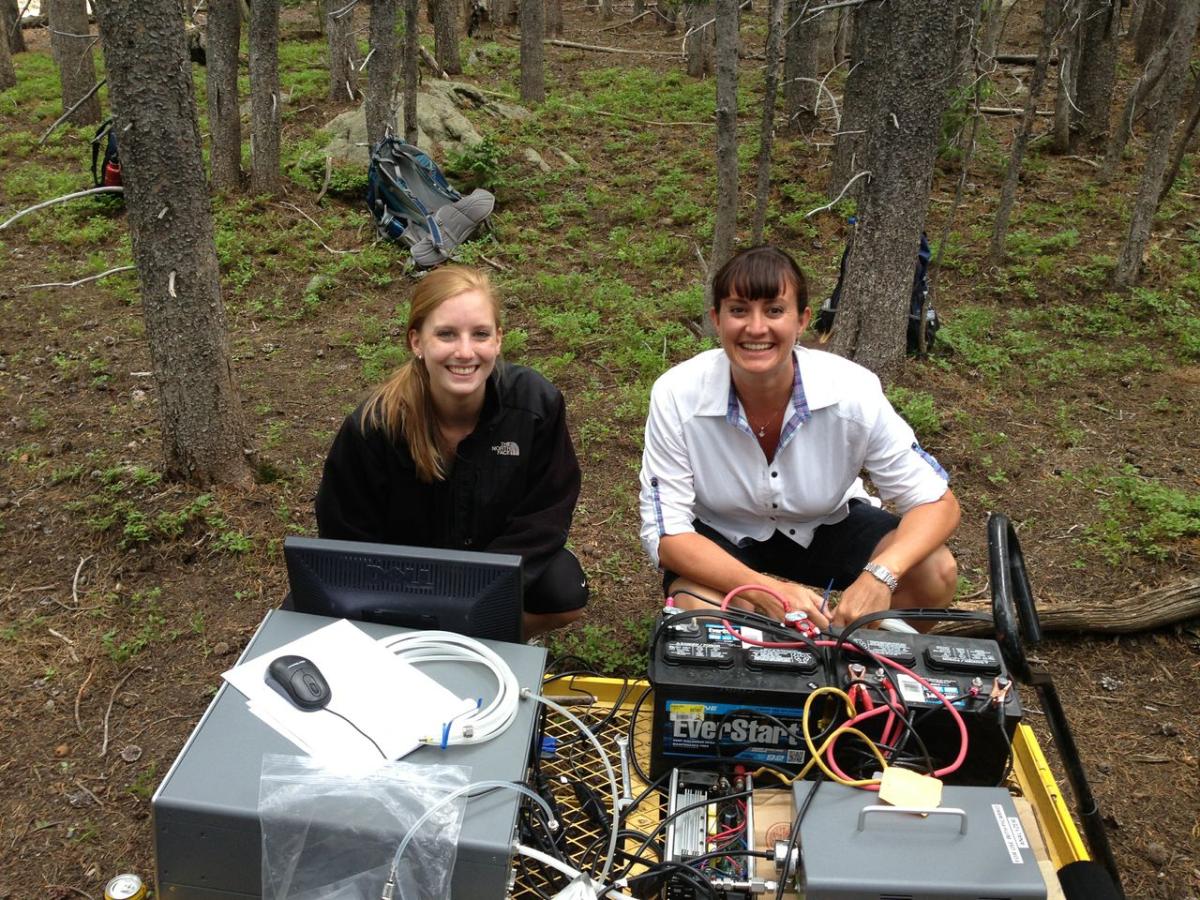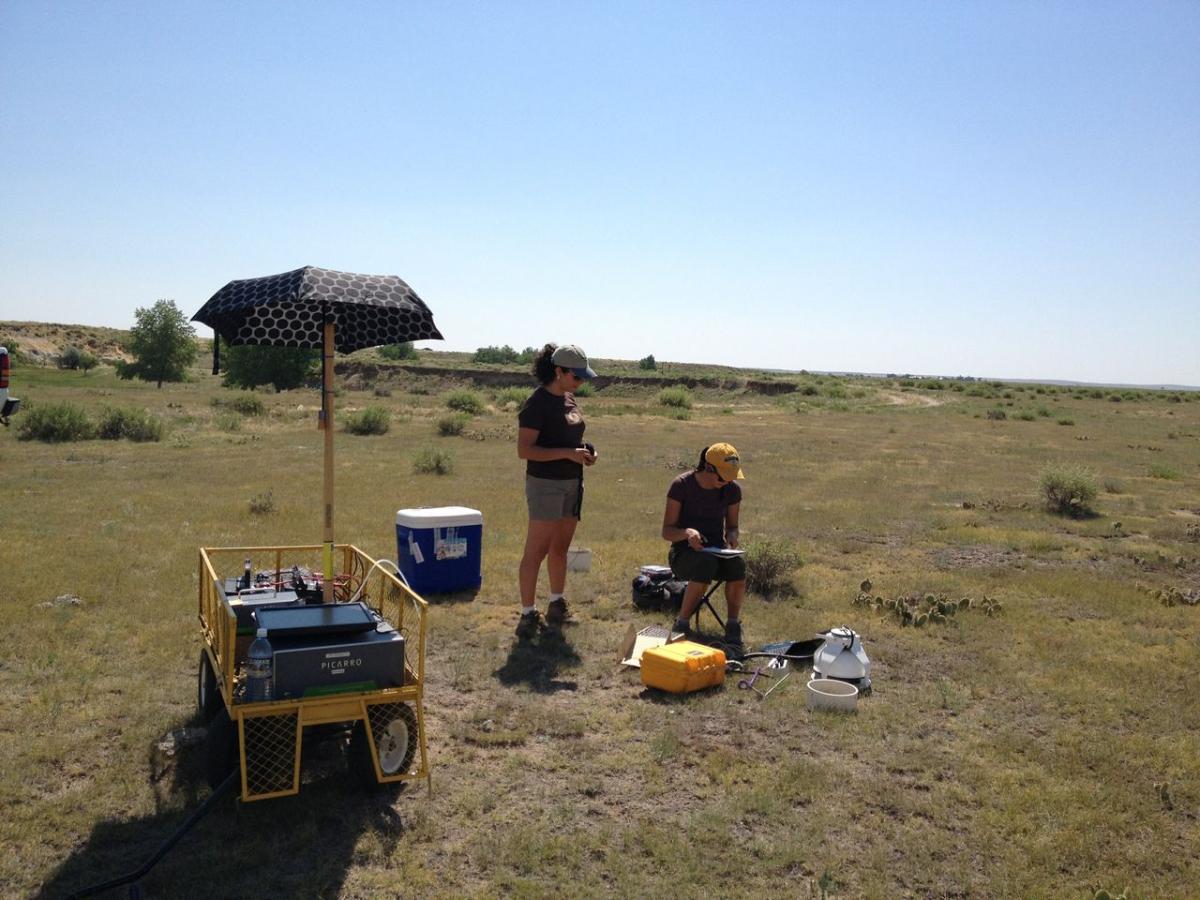One of the great things about being a part of the Picarro team is the ability to attend conferences that will give us knowledge to support potential, new, and veteran users of Picarro technology. This summer, a team from Picarro comprised of Mark Davis, Jennifer Boulton, Derek Fleck and myself, had the opportunity to bring a G2131-i isotopic carbon in CO2 Cavity Ring-Down Spectroscopy (CRDS) analyzer to a field demo in collaboration with Colorado State University Professor Francesca Cotrufo. The goal is to run a field study in tandem with the Li-Cor 8100 soil chamber. The work was part of a two-week long Summer Soil Institute course.
Besides meeting many accomplished professors and students, we were able to demonstrate the Picarro analyzer’s ability to seamlessly interface with the Li-Cor soil chamber to achieve realtime isotopic carbon measurements in the field. Without the G2131-i CRDS analyzer, gas samples have to be collected in vials from the soil chamber and brought back to the lab to be measured via Isotope Ratio Mass Spectrometry analysis (IRMS); a process that could sometimes take up to two weeks, due to sample backlog. By loading the Picarro CRDS analyzer on a garden cart with a battery powering system and connecting the inlet of the CRDS analyzer to the outlet of the soil chamber, and the exhaust of the recirculation pump to the inlet of the chamber, the system was field-ready. The connections were made using Li-Cor quick-connects that fit on the inside of ¼” Bev-A™ or Teflon™ line.
The G2131-i analyzer made two field excursions: the first was to Shortgrass Steppe, a long term ecological monitoring site where many groups research all aspects of the climate, from soil to NEON (National Ecological Observatory Network) atmospheric monitoring. Soil is of interest at this site because there is a linear gradient of rainfall over the hundreds-of-square-miles site. Four soil collars were set up, roughly 30 yards apart, and respiration data was taken using just the Li-Cor, while vials of sample were collected at even time intervals for IRMS. Afterwards, the Picarro CRDS was connected to the soil chamber and measured each collar for 10 minutes so that a direct comparison could be made between Picarro’s isotopic carbon measurements and the IRMS results.
The second field excursion was to Niwot Ridge, a dense pine forest at roughly 10,000ft in the mountains. Unfortunately, due to a broken USB to 9-pin serial adaptor, measurements could not be taken on the Li-Cor analyzer. Despite the set-back, we were again able to demo the Picarro CRDS with the soil chamber to the students. By manually placing the soil chamber onto the collar, the students were able to watch as the CO2 concentration began to ramp up with time. They appreciated the instantaneous isotopic carbon measurements that the Picarro CRDS analyzer provided, expressed as ∂13C. The two 12V Marine Deep Cell batteries lasted for the entire day (roughly 9am-4pm). The group then made a small detour to the Niwot Ridge AmeriFlux Tower, where there is a Picarro L2120-i isotopic water analyzer in a small shed, among many other atmospheric measurement instruments on the tower itself. The site is used for atmospheric, soil, tree, and ground water analyses.
Despite not being able to take measurements with the Li-Cor analyzer on the second day, the trip was a great success from a Picarro measurements standpoint. We were able to prove that Picarro CRDS analyzers could operate with Li-Cor soil chambers, and demonstrated the benefits of getting instantaneous isotopic measurements in the field. I hope to have more opportunities to travel and learn about new applications for Picarro analyzers.
Thanks for reading!
Melissa Palmer

